How to clean kitchen cabinets for a fresh new kitchen
Make your cabinetry feel brand spanking new
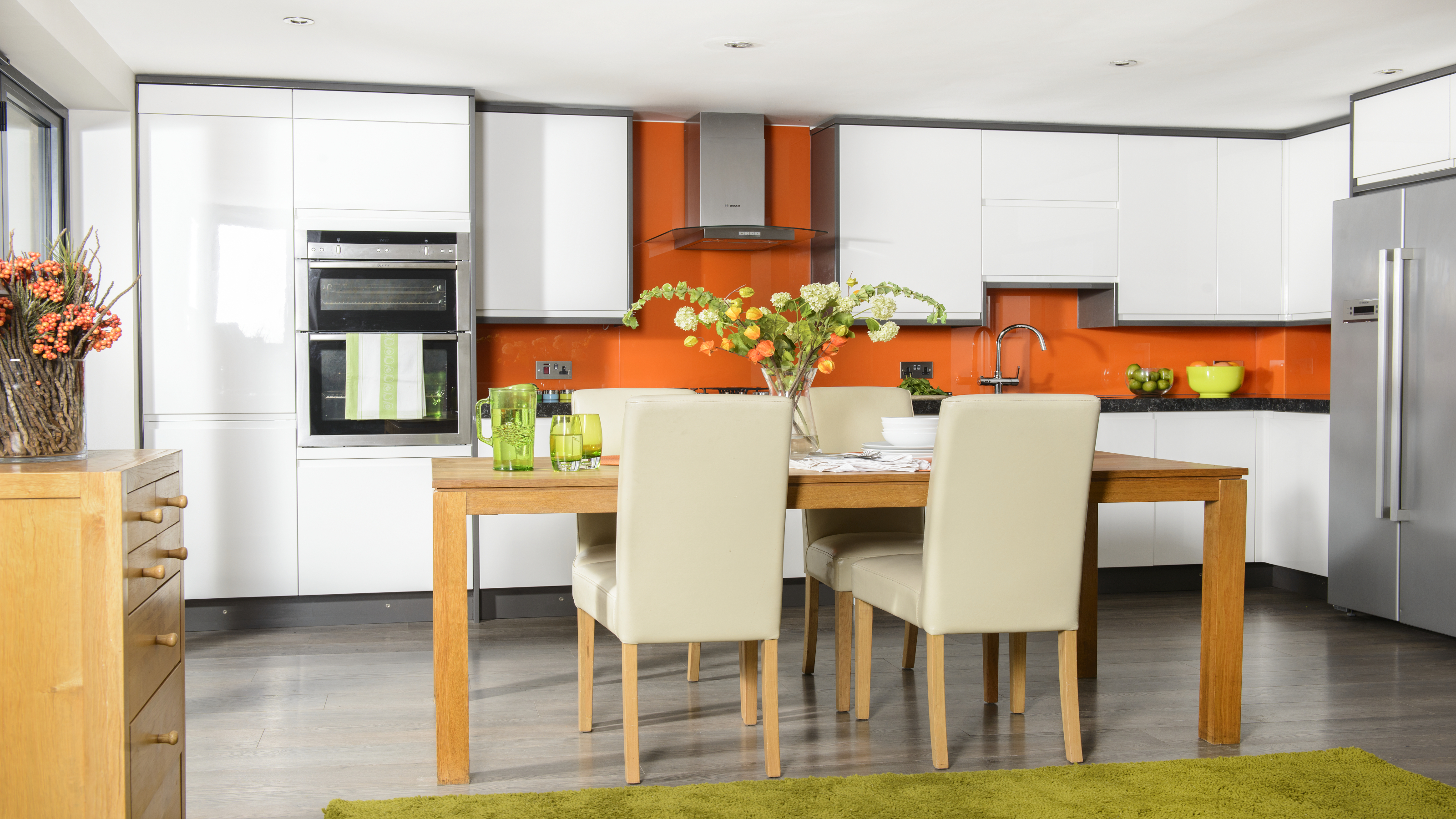
While you’re probably used to mopping up spills, cleaning grease from your cooktop and giving your kitchen a general clean, one area you might not have considered cleaning in a while are your kitchen cabinets. And you’re not the only one.
While keeping on top of cleaning your kitchen cabinets can stop them from getting too dusty or dirty, sometimes that’s easier said than done. So, whether it’s been a while since you last cleaned your kitchen cabinets or you’re looking for tips to make cleaning them more regularly a bit less daunting, keep reading for our experts’ top tips, as well as a step-by-step guide on what to use and why.
How to clean kitchen cabinets – a step-by-step guide
As with anything, preparation is key, which means you don’t want to jump straight in when it comes to cleaning your kitchen cabinets.
So, before you pick up your rubber gloves or any cleaning solutions, it’s incredibly important that you check your supplier’s cleaning guidance in the first instance. For example, how you would clean wooden kitchen cabinets differs compared to laminate or glass-fronted doors which is why it’s important to choose the right cleaning product.
It’s also recommended that you do a patch test – applying a small amount of the cleaning solution to check that it doesn’t cause a negative reaction – before you start liberally applying it to your cabinetry.
Prepare your cabinets for cleaning
While it may seem like common sense, the first thing you’ll want to do is empty your kitchen cabinets. This is also a great time to check expiry dates and toss out anything that is past its best. Then you can start gathering your cleaning supplies.
Dust your kitchen cabinets
Next, give your cabinets a dust. A dry cloth or duster will remove most dust or you can even ‘use a vacuum cleaner with a crevice attachment to remove any crumbs and dust, especially in corners and around hinges,’ says Alex Ventress, property expert at The Property Buying Company.
Get the Ideal Home Newsletter
Sign up to our newsletter for style and decor inspiration, house makeovers, project advice and more.
While dusting make sure to dust the exterior and interior doors of your kitchen cabinets, as well as the shelves and interior walls.
Take a top-down approach
You’ll want to ‘begin cleaning at the top and work down each cabinet,’ according to ISSA-certified cleaning expert, Sabrina Tretyakova. And we’re particularly fond of this method. This allows you to get right to the back of and into every nook and cranny of your kitchen cabinet instead of just cleaning what is on the shelf or shelves closest to you.
Depending on the material of your kitchen cabinets, what you use on them will differ. But we’ve explained that in more depth below. However, Sabrina recommends that ‘if the cabinets are particularly dirty, you can spray the cleaning solution directly onto the surface. Otherwise, spraying the liquid on a clean cloth and wiping the cabinets down,’ can be the best option and stop you from adding too much liquid to your cabinets as you clean.
Wipe down
On the internal shelves, use a non-abrasive cleaner – this could be soap and water, or a natural solution like white vinegar and water – to give them a wipe, making sure to dry them thoroughly before you move onto another task. Simply ‘dip a microfibre cloth – or sponge – in the solution, wring it out well, and wipe down cabinet doors, drawers, and frames and work in sections for a thorough clean,’ Alex instructs.
‘For stubborn grime, create a baking soda paste, apply it to the stain, let it sit for a few minutes, then wipe it clean with a damp cloth. Rinse and dry thoroughly,’ Alex adds.
Don’t forget about handles, knobs, pulls and hinges
‘If possible, remove the knobs, handles, and hinges from the cabinets. This will allow you to clean them thoroughly and reach all the crevices,’ explains Olivia Young, cleaning expert at Astonish.
But in most cases, you will be able to clean these fixtures and fittings with something like an old toothbrush, to really allow you to get into any ornate closures. And don’t forget about the hinges either, as dust and debris can build up there too.
Put items back and organise
Now that your kitchen cabinets are clean, it’s time to put everything back and take the chance to reorganise your storage. We’ve got plenty of tricks to keep your kitchen cabinets tidy but something as simple as transferring dry goods such as pasta or rice into airtight containers can make a big difference to how easy it is to maintain and organise them in the future.
How to clean kitchen cabinets – by material
How to clean painted cabinets
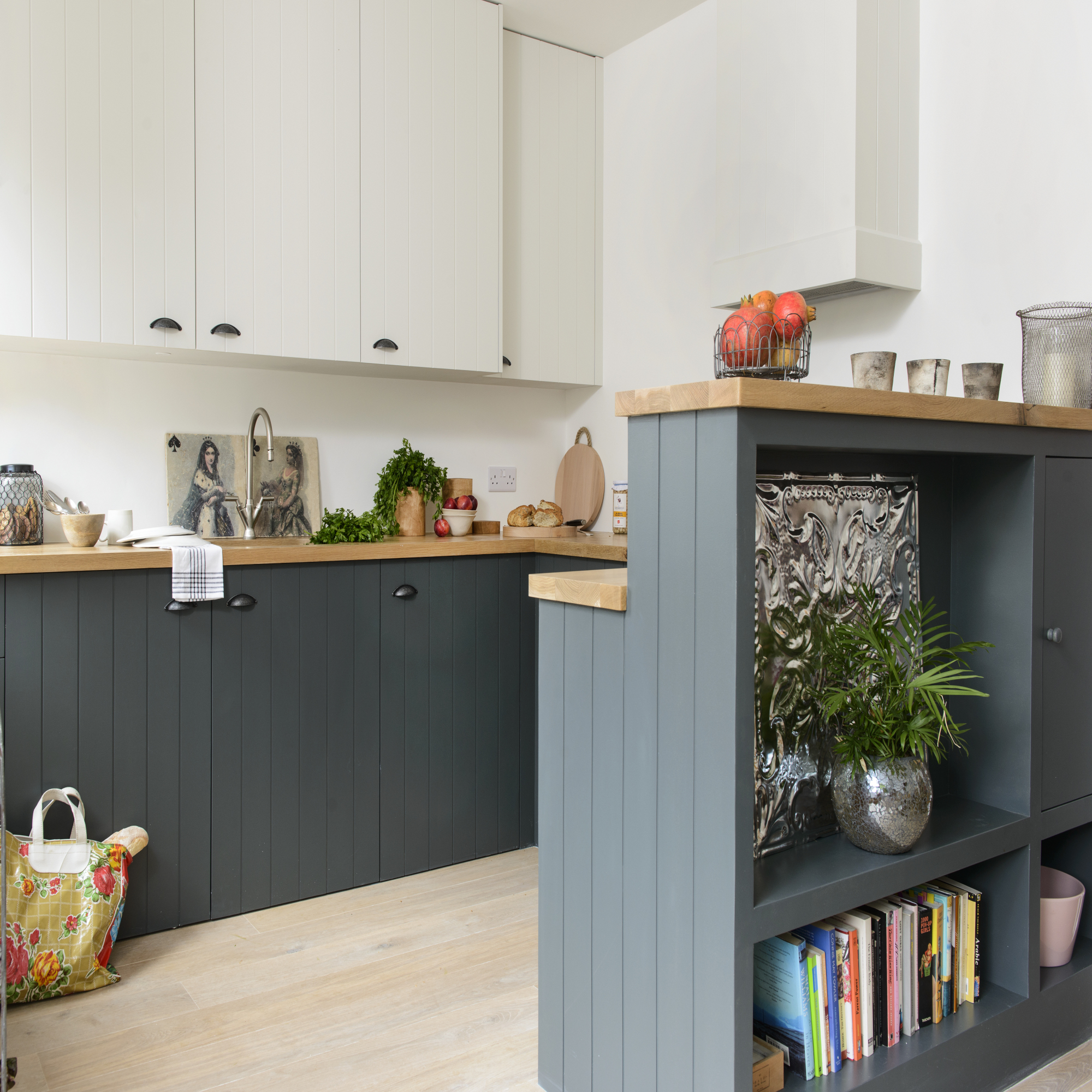
‘If your kitchen cabinets are painted with a high-gloss paint, they are likely to be fairly durable and easier to wipe clean without damaging them,’ says cleaning expert Olivia. ‘However, if they are a matte finish you need to take extra care to ensure you don’t use anything too harsh when cleaning them, as doing so could damage the paint.’
‘You need to be careful when cleaning painted surfaces as abrasive cleaning products can remove the paint and finish – which will leave you with an additional job,’ agrees Sue Caldwell, managing director at Clean Living.
‘For a gentle solution, but one that can cut through grease and grime build up, opt for washing up liquid and some warm water and a microfibre cloth,' Olivia advises. 'Simply dampen the cloth and work in circular motions to give your painted cabinets a good clean.' Just remember to dry off any excess water using a fresh cloth.
What you'll need:
- Microfibre cloth
- Warm water
- Non-abrasive cleaning solution (washing up liquid works well)
1. Check which cleaner to use
Paint is easily lifted if the wrong type of cleaning product is used, so before you start cleaning, check with your kitchen manufacturer about which cleaning products they recommend.
2. Do a test patch
Before cleaning painted cabinets, test the cleaning solution on a small inconspicuous area to make sure it doesn't affect the finish. Using a microfibre cloth dipped in warm soapy water which has been rung out to remove any excess water is a good option.
3. Wipe over your cabinets
For painted cabinets, wiping them over daily will prevent a build up of stubborn grease stains, preventing the need to use strong cleaning products.
How to clean wood cabinets
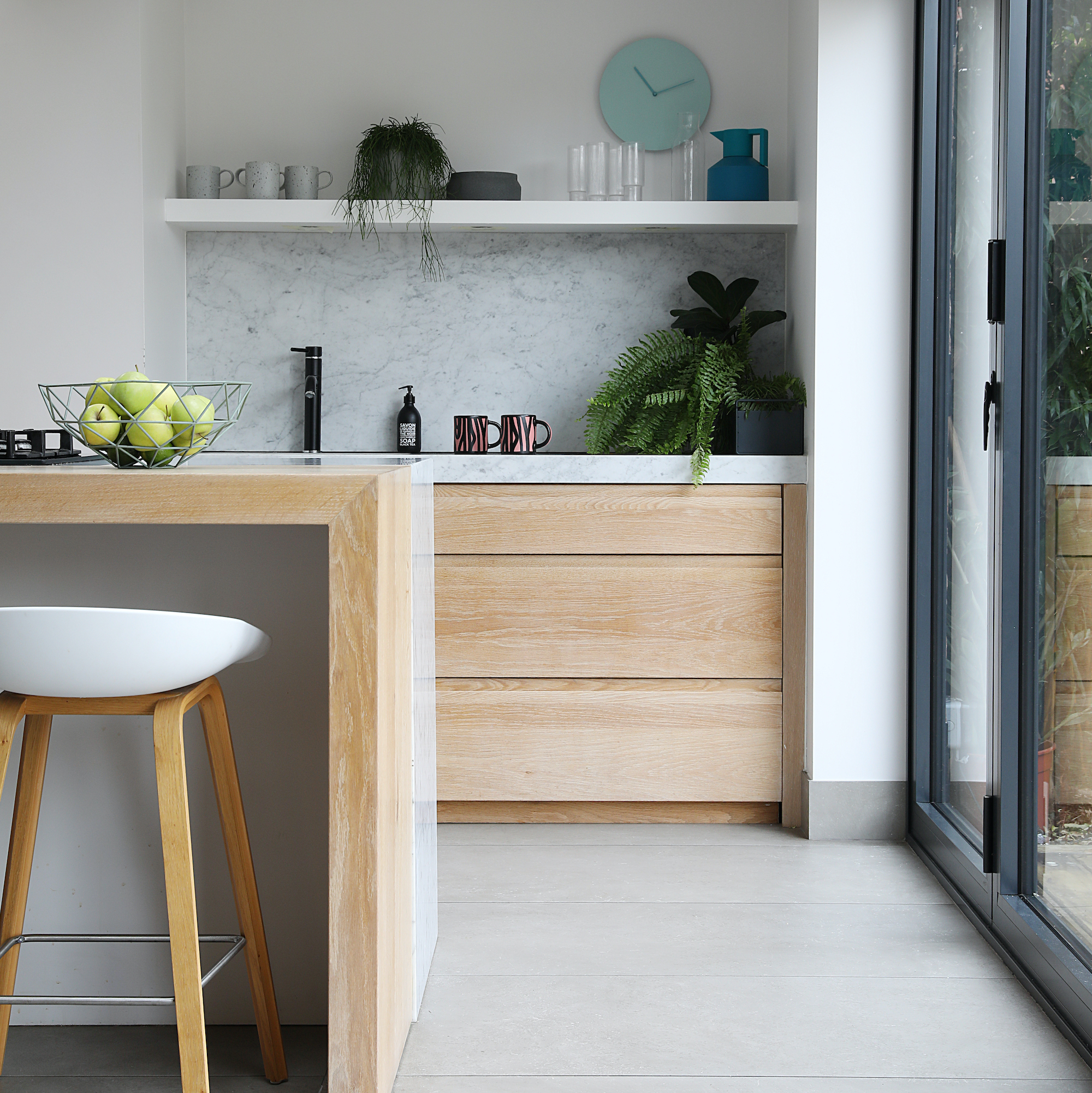
Wood can be one of the trickier materials to clean when it comes to our kitchen cabinets and that’s because wood is naturally porous, which means water can be absorbed into the wood, causing a slew of issues.
Because of this, ‘whichever method you are using whether it is soap and water or a cleaning product, you want to ensure that you do not over saturate the wood as this can lead to damage and even the wood swelling, making them difficult to close,’ explains Penny Moyses, founder of the Clean & Tidy Home Show.
It's quite simple to make your own cleaning solution from things you have in the kitchen cupboard.
'When it comes to wood kitchen cabinets, you'll want to create a vinegar solution for cleaning,' advises Sarah Dempsey from MyJobQuote. 'Mix a cup of white vinegar with a cup of water. This will create a mild cleaning solution which is perfect for use on wooden kitchen cabinets. The solution won't warp the wood and won't affect the finish.'
What you'll need:
- 1 cup of white vinegar
- 1 cup of water
- Microfibre cloth
- Spray bottle
1. Mix it up
In a clean spray bottle, mix the white vinegar and water together to make up your cleaning solution.
2. Remove excess water
Spray your cleaning solution over the cabinets and gently wipe over using a microfibre cloth to remove any stains and spills.
How to clean laminate cabinets
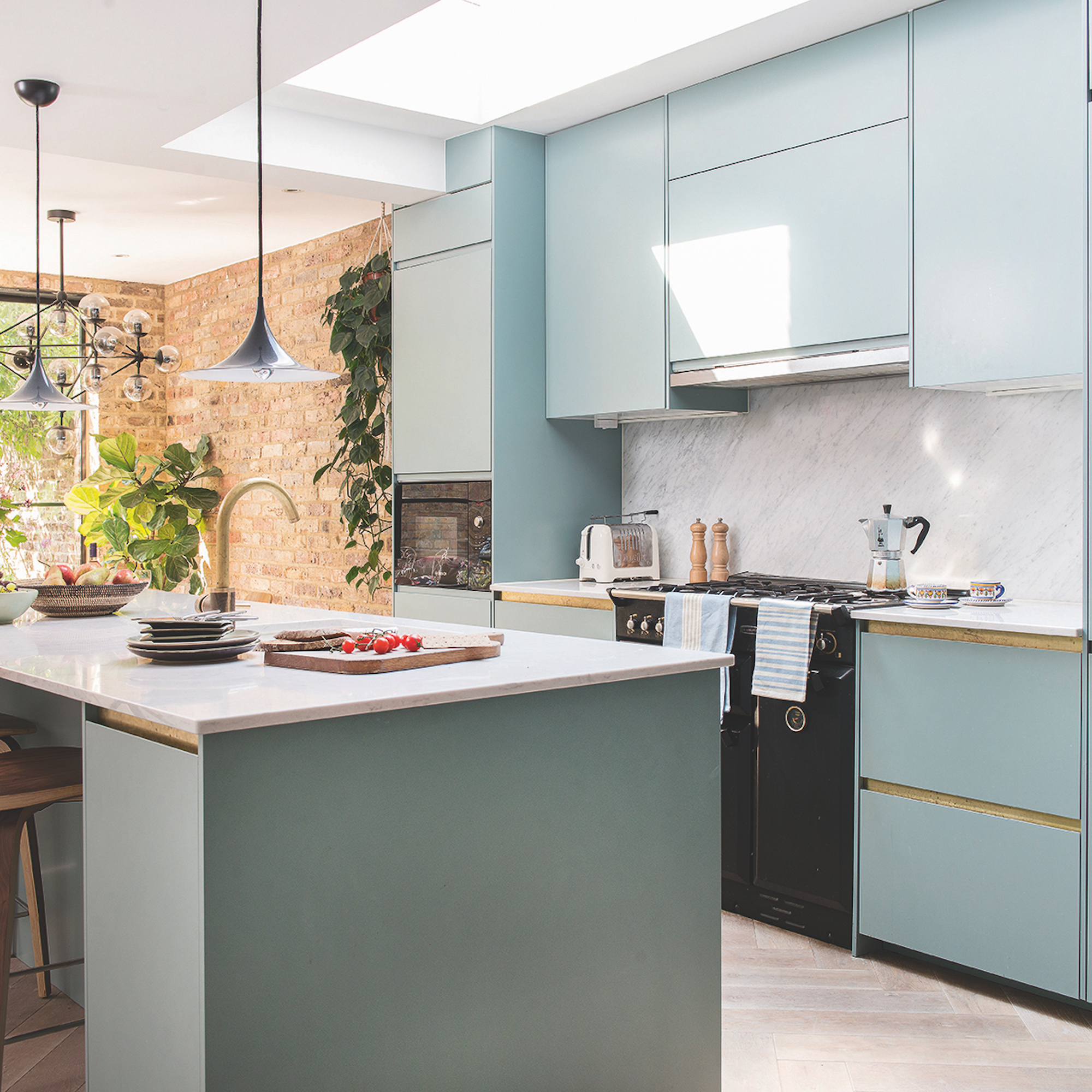
'When it comes to laminate kitchen cabinets, you can clean these with a multi-purpose cleaning spray,' says Sarah from MyJobQuote. 'Simply spray some multi-purpose cleaner onto a microfibre cloth and then wipe away all of the grease splatters, fingerprints and other marks away from the surface of the cabinets.'
‘You need to be careful with laminate so as not to harm the lamination,’ warns Penny from the Clean & Tidy Home Show. ‘Using a delicate cloth and chemical free cleaner can help remove any dirt, while the trusted method of a vinegar and water mix can also help.’
What you'll need:
- Multi-purpose cleaning spray
- Microfibre cloth
1. Spray the surface
Using a multi-purpose cleaner, spray a little over your cabinet doors, one at a time, and wipe over using the microfibre cloth. Do this once a week to prevent a build up of grime.
2. Buff shiny cabinets
If your cabinets have a glossy finish, buff them with a dry microfibre cloth to prevent unsightly streaks from showing.
How to clean glass cabinets
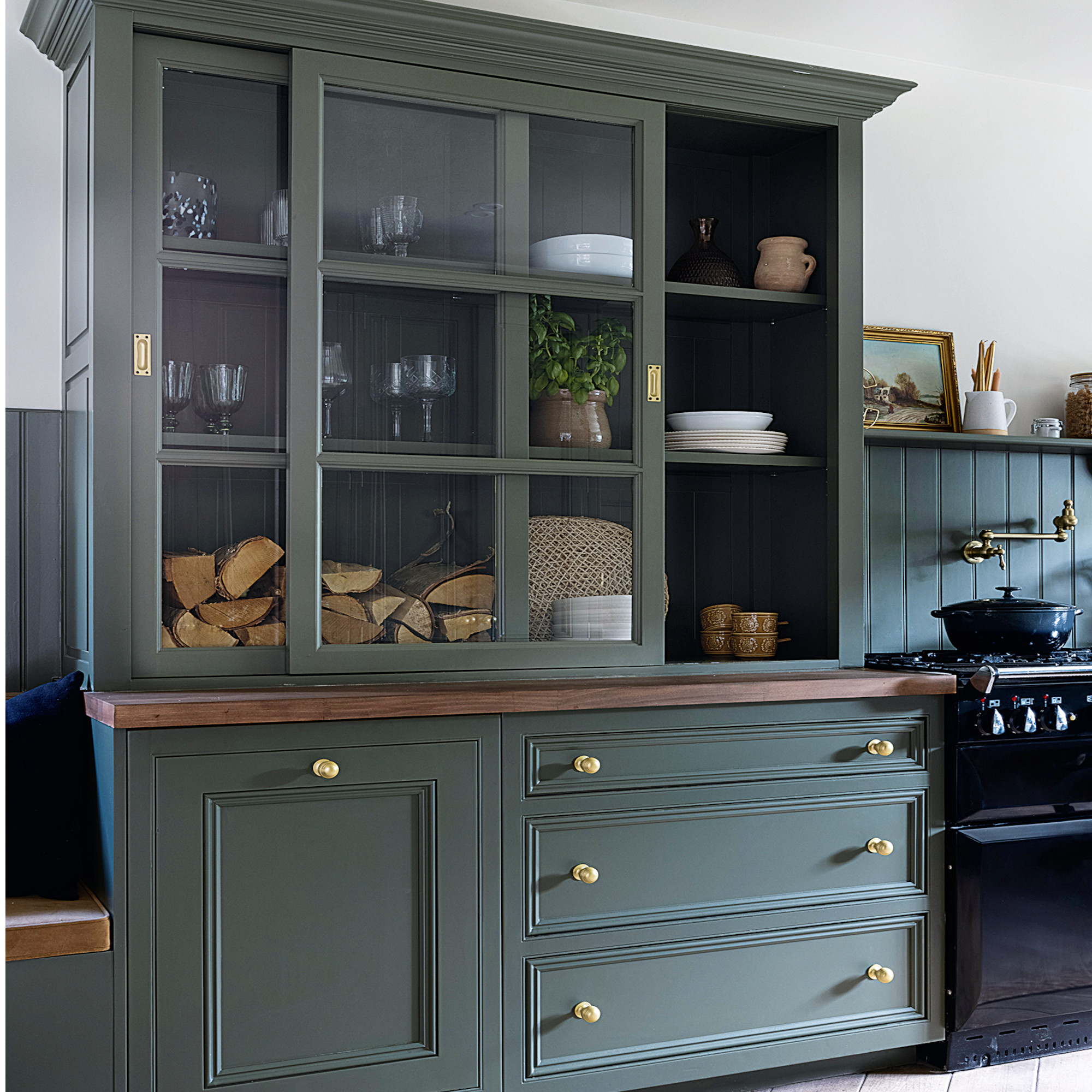
One of the main things to consider when you go to clean glass cabinets is streaks, as they can instantly make a clean cabinet look smeared or dirty again.
‘Using a glass-specific cleaning spray can help to avoid streaks and damage,’ says Steve Horner, kitchen hygiene expert at Cladding Monkey. ‘You could also use a mixture of one part white distilled vinegar and four parts water to clean your glass kitchen cabinets, however you do run the risk of it creating marks and those marks then being difficult to clean. With glass, it's always best to stick with proper glass cleaner, if you can.’
What you'll need:
- Distilled water
- Distilled vinegar
- Essential oil
- Spray bottle
- Microfibre cloth
1. Make a natural cleaning solution
Mix together four parts distilled water to one part distilled vinegar in a clean spray bottle and add a few drops of essential oil to give a nice fragrance.
2. Use a little at a time
Spray a little cleaning solution over the glass and work quickly using the microfibre cloth to clean the surface. Buff well to prevent any streaks from forming.
FAQs
How often should you clean kitchen cabinets?
When you have decided what to look for in your kitchen cabinet and made a decision. Giving your kitchen cabinets a wipe over every one to two weeks is a good place to start, but every few months give them a more thorough clean.
Empty out cupboards and wipe away any crumbs or spills and use this as a good opportunity to check if any products are out of date. Cabinets near your hob will need more regular cleaning if they get a lot of food splatters from cooking.
What is the best thing to clean kitchen cabinets with?
You don't need any fancy cleaning products to clean your kitchen cabinets. 'Unit interiors can be wiped down with a soft cloth dampened in soapy water,' says Elizabeth Sherwin, creative director at Naked Kitchens.
'You may need to use an anti-bacterial surface spray inside food storage units but again, try not to use bleach-based products or excessive amounts of moisture. Ensure the cupboard doors and drawers are left open to air dry before refilling.'

How do I tackle grease on kitchen cabinets?
Our kitchen cabinets can easily attract grease. From a buildup caused by cooking, to greasy fingerprints left behind, the orange or yellowish substance can be sticky and tough to tackle at the best of times. But ‘a simple solution of white vinegar mixed with an equal part of water will clean most surfaces of grease,’ according to Laura Harnett, founder of Seep. Washing up liquid mixed with water is also just as effective at combating grease.
‘Alternatively, you can create a paste with baking soda and water and apply it to the grease and scrub. Less stubborn grease can be removed by wiping the area with distilled white vinegar and warm water,’ advises cleaning expert Sabrina. You can then finish off by wiping the area with a clean, damp cloth.
What shouldn't you do when cleaning kitchen cabinets?
Regardless of the material of your kitchen cabinets, ‘never use an abrasive sponge or scourer to clean your kitchen cabinets as they will damage the surface,’ warns Laura from Seep.
While it can be tempting to scrub at a stain or dirt, ‘that’s one of the worst things you can do,' agrees cleaning expert Olivia. 'The reason for this is that it will remove the sheen of the paint, and sometimes even the paint itself if they’re painted, and it could leave marks and scratches on glass or wooden ones.'
Using too much water can also cause issues, such as warping and sinking. ‘Water can get into the body of the cabinet and cause further damage,’ continues Laura. And as for a certain wood cleaning hack, ‘it’s a common myth that rubbing olive oil onto wood will act as a natural polish. This isn’t the case and it’ll just sit on the surface leaving it greasy and grime will get stuck in it as well,’ Laura concludes.

Amy Hodge has been working on interiors magazines for over 11 years. She's a freelance writer and sub editor who has worked for some of the UK's leading interiors magazines including Ideal Home, Style at Home and Country Homes & Interiors. She started at Style at Home just after it launched as food editor and is now chief sub editor for Ideal Home, Style at Home and Country Homes & Interiors.
-
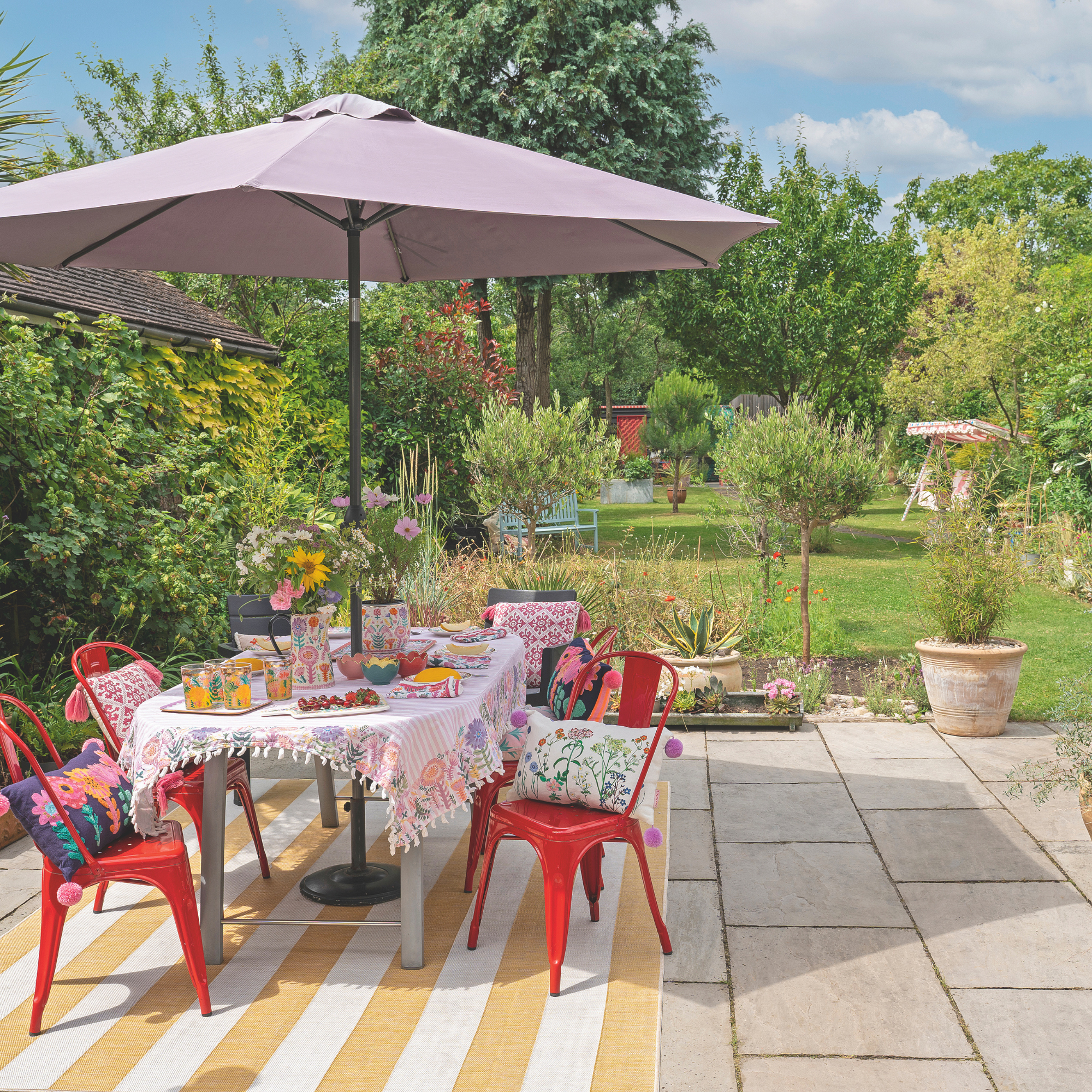 The one-year decluttering method is the key to clearing garden clutter this bank holiday – experts say it’s one of the simplest approaches
The one-year decluttering method is the key to clearing garden clutter this bank holiday – experts say it’s one of the simplest approachesBanish garden clutter with this simple and effective method
By Kezia Reynolds
-
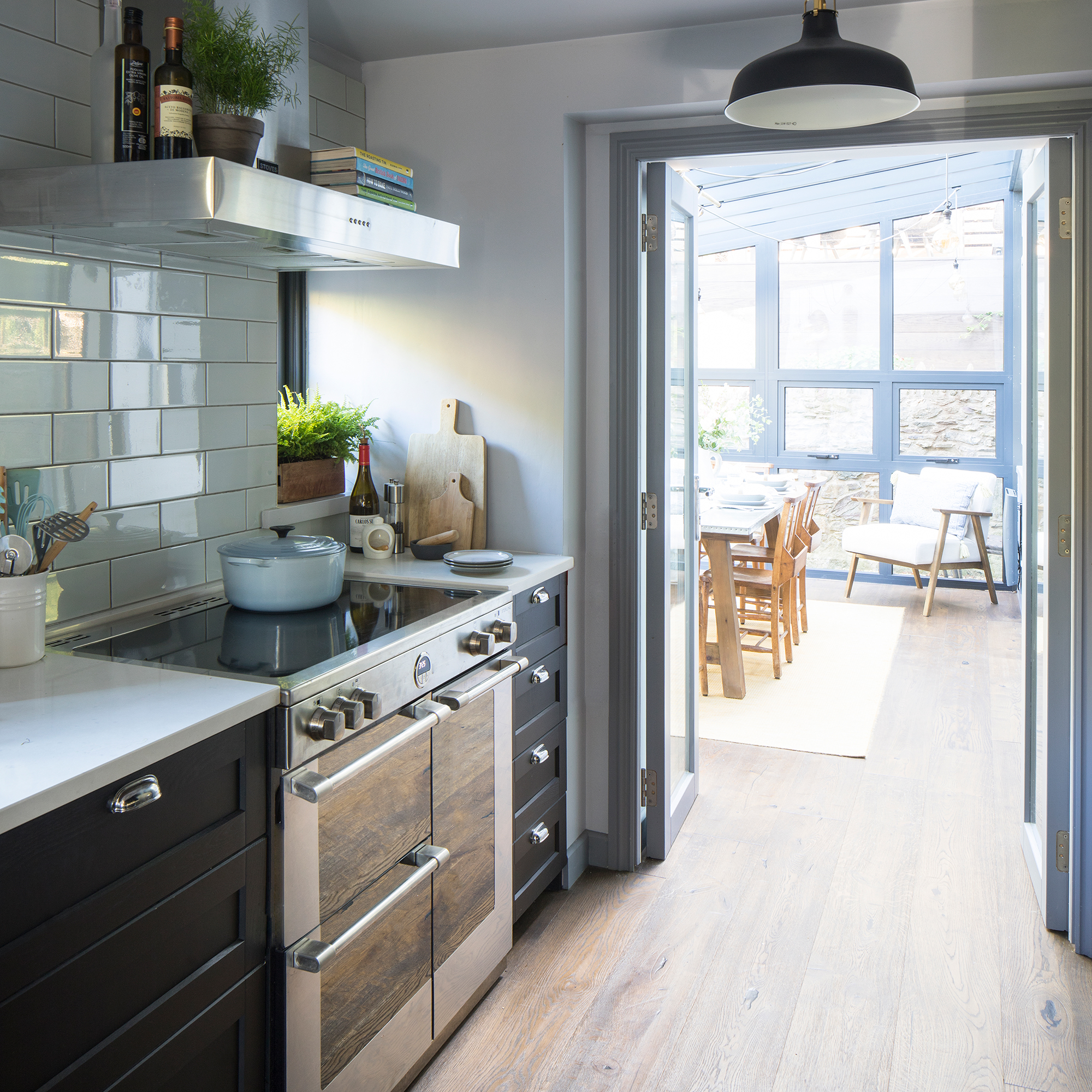 'We were keen to buy a small country retreat to escape to'
'We were keen to buy a small country retreat to escape to'This Devon cottage has brought balance and calm to the owners' busy working lives
By Marisha Taylor
-
 Find out how much a party wall surveyor costs now to avoid any nasty surprises later
Find out how much a party wall surveyor costs now to avoid any nasty surprises laterIn some cases, hiring a party wall surveyor will be unavoidable – our guide explains how much to set aside for their services
By Natasha Brinsmead
